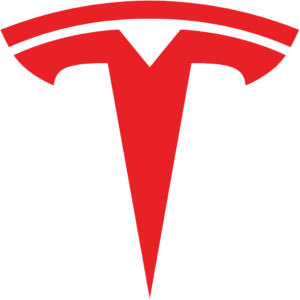Tesla’s Battery Day and More…………
Great balls of fire!! Following Tesla’s September 22nd Battery Day and the blizzard of innovative technical material from that, other important Tesla news has been flooding in for the past week. This posting will highlight some of these matters.
Tesla followers were disappointed that Tesla’s stock price didn’t rise dramatically after Tesla’s Battery Day. Instead it dropped sharply. This was due to three factors. Number one was a general stock market sell-off, particularly in tech stocks. During the period 9/21 to 9/23, the Dow, the S&P 500, and the NASDAQ exchanges each dropped about 1.3% to 1.4%. During the same time Tesla stock dropped like a rock, from $449.39 to $380.36, down 15.4% before it and the markets started their comebacks.
The second factor was that Tesla’s Battery Day was a technical presentation for technical Tesla and battery industry followers – – a nerd party for EV nerds! Nonetheless as noted by Rob Mauer, Tesla could have done a better job by preparing a Tesla Battery Day press kit that was written clearly for the lay person and investor — in the easy-to-comprehend style of Tesla’s annual Impact Report (most recent 2019).
Third, I underestimated yet again the stupidity and superficiality of America’s press, cable news pundits, and Wall Street analysts in absorbing and communicating about such technical matters in general and Tesla in particular. Their only concern was that in so many words Tesla didn’t confirm a “million mile battery” that had been bandied about in the press for months, and furthermore that Tesla didn’t announce any new revolutionary vehicle models (beyond the expected Model S “Plaid”), or their imminent availability.
Indeed, Musk was somewhat uncharacteristically cautious in his presentation by downplaying expectations of immediate benefits, stating that Tesla still had a lot of work to do to accomplish its ambitious goals. This despite the fact that Tesla is well down the road in making many of the roughly fifty improvements they cited in their presentation. Musk has recently reported that Tesla has had their new 4680 batteries running in test vehicles since May of this year.
Some people do not realize that Tesla had two additional ulterior motives in conducting its Battery Day event. The first was to educate and motivate the rest of the global auto industry to speed up their electrification efforts and build more competitive products. Musk realizes that by itself Tesla cannot change the world to a more sustainable environment, and the electric vehicle market opportunity is so huge that there is plenty of room for every vehicle manufacturer. Well, almost.
Tesla also positioned its Battery Day presentation as a hiring pitch. To accomplish its lofty goals Tesla needs more scientists and engineers. Already Tesla and SpaceX rank as the two most attractive companies for graduating engineers to work for. But many more engineers are needed, as well as production workers and support staff. Tesla is on a massive global hiring spree – – 5,000 in China, 8,000 in Germany, 5,000 in Texas, and hundreds more in Fremont. Engineers want challenges and want to learn from Musk the master, even though working for Musk in the Tesla culture can be demanding. By joining Tesla, they also welcome being part of a growing electric vehicle and solar Tesla-led revolution that is making the world a better place. Tesla’s combination of state-of-the-art learning and rapid company growth means opportunity to today’s young people.
What Tesla announced in its Battery Day proceeding was one of the most important news events in the history of vehicle electrification. As we have discussed previously, when Tesla came out with its initial Roadster in 2008, followed by its revolutionary Model S in 2012, it lacked the money, technical wherewithal, and time to use anything but off the shelf batteries in its vehicles. It chose Panasonic’s 18650 cylindrical cells because they were available in reasonable volume (at the time!), at a low price, and they contained the highest energy density out of a field of similar batteries and form factors.
During the intervening years Tesla has learned a lot about battery technology and battery production technology. Then too, it has grown frustrated by Panasonic’s and the entire battery industry’s inability to scale production, improve yields from their production processes, and continuously improve its offerings for electric vehicles. In the face of increasing demand for its current and future vehicles, Tesla realized that the current entire global battery industry was incapable of keeping up with Tesla’s battery demand, let alone China’s rapidly increasing demand, and slower emerging demand from other electric vehicle manufacturers in the US, Europe, and Japan.
As a result, Tesla – to ensure its own growth and success — was forced to vertically integrate even further by developing its own battery production capability. But equally important, Elon Musk and Tesla were convinced that they could design and produce better batteries – with better chemistry, higher energy density, longer range, quicker charging, increased safety, lower costs, much higher volume production rates, and less capital expenditure.
In order to accomplish Tesla’s battery goals, Musk and the Tesla team started from the very first principles of chemistry and physics, engineering, and supply chain management. As usual with Elon, his goals were innovation, continuous improvement, elimination of waste, process simplification and coupling, lower cost, and faster speed throughout the supply chain and manufacturing process. It’s obvious that no other battery supplier, automotive OEM, or startup has ever performed such an analysis and set in motion a strategic plan and specific initiatives to improve every single aspect of battery chemistry and production. The startup Lucid Motors, headed by CEO Peter Rawlinson (a former early Tesla engineer) might be the closest effort to Tesla’s current approach outlined in its presentation, but Lucid’s approach is considerably less comprehensive and advanced than Tesla’s program.
I will not attempt to cover each technical detail of Tesla’s Battery Day as it would consume a few dozen pages and I don’t think my average reader is interested in that much technical battery detail. The link here provides access to a condensed sixteen minute YouTube video of just the slides Musk and Drew Baglino, Tesla’s Senior VP of Powertrain and Energy Engineering, presented on Battery Day. The entire Battery Day presentation by Musk and Baglino can be seen here. Soon, a longer and more battery-oriented technical analysis will be available from Jordan Giesige on his “The Limiting Factor” YouTube site.
After Tesla’s Battery Day, in quick succession, a veritable cascade of events has occurred, namely:
- Tesla announced that it had purchased an additional 381 acres contiguous to is 2100 acre Austin TX site. This site has two advantages. First, it is mostly flat grassland that needs much less site prep for any purpose than the land on most of the original site. Two, this acreage provides direct access to the North to FM 969, thus providing Tesla workers another entrance to Tesla’s plant and facilities on this site.
- Tesla signed a long term agreement with Piedmont Lithium (PLL) in North Carolina for the supply of spodumene, the hard rock version of lithium ore. This is the first US-based source of lithium Tesla has secured, thus avoiding long and expensive shipping costs of lithium ore from South America, China, or Australia.
- Wal-Mart of Canada announced that it had tripled its original orders for Tesla’s Semi truck to 130 units as part of its Zero Emissions by 2040 Program announced at its Climate Week conference earlier in September. At an average of $180,000 a truck, that’s about $23 Million of nice Semi orders from a customer that will buy many more Semis in Canada and the US!
- During its Battery Day presentation, in order to further secure a US-based supply of lithium ore, Tesla announced that it had acquired the rights to mine 10,000 acres of clay-based lithium ore in Nevada. Characteristically, after talks went nowhere to create a deal (or buyout?) of Cypress Development Corporation in southwest Nevada and its clay-based lithium ore deposit, Tesla announced that it would pursue its own Nevada lithium ore deposit on which to develop its new salt-water-based lithium extraction process. No other company has been able to make this lithium-from-clay process work at a commercial scale. Undaunted, Tesla will have a go at it as the payoff to having usable lithium raw materials in the same state as its Reno Panasonic Giga battery plant is huge.
- Recently, LG Chem, the globe’s largest EV battery supplier, said it would spin off its battery division as a separate company. No sooner had LG Chem done that than Tesla announced that it might be interested in acquiring up to 10% of this new LG Chem company’s stock – a move that would represent a maximum investment of about $1.1 Billion on Tesla’s part. LG Chem, as we discussed in a recent article, also is partnered with GM in building a new battery pant in Lordstown, OH.
- In an exclusive announcement, Benchmark Mineral Intelligence announced that Tesla would be building its own lithium hydroxide and catalyst plants at Tesla’s new Austin TX plant site. The lithium hydroxide plant will process raw spodumene hard rock ore into lithium hydroxide that will in turn be used to manufacture cathodes (the positive battery pole) for Tesla’s batteries.
- Construction at Tesla’s new Austin TX plant is proceeding rapidly. Contractors are now creating and laying down rebar in preparation for the pouring of concrete foundation pads for the site’s initial main buildings starting in the beginning of October. Production at Giga TX could start as early as May 2021!
My Tesla Battery Day predictions that I made way back on June 29th as to what Tesla would be announcing on its Battery Day in terms of battery improvements were all correct – six out of six, plus paragraph #5 on page two and paragraph #8 on page 3. I say that only to point out the many improvements Tesla announced. Nonetheless, my predictions fell far short of the mark as I never imagined the scope of Tesla’s battery and supply chain improvements it would tackle. Lesson learned: never underestimate Elon Musk.
There is a wonderful slide in Tesla’s presentation that sums up the battery and supply chain improvements it expects during the coming three years or more: a 54% improvement in battery range, a 56% reduction in battery $/kWh cost, and a 69% reduction in capital expenditure cost. These are astounding, even if they don’t fully achieve their goals. No other automotive manufacturer is close to where Tesla is today in EV overall performance and cost, and on its Battery Day Tesla showed that it is well on the way to leapfrogging them another three to five years.
In his presentation on Battery Day (and in tweets thereafter), Musk said that Tesla’s goals were to be manufacturing 20 million vehicles a year by 2030, “probably before [that time]”. By 2030, Tesla will require a minimum of 3 Tera watthours (TWh) (3,000 GWh) of batteries annually for both vehicles and energy storage. In 2019 Tesla consumed about 0.15 TWh. Tesla’s new Roadrunner production line on Kato Road (near its Fremont plant) will eventually produce 10GWh annually. That would make it the 13th largest battery plant in the world in terms of today’s battery manufacturers’ capacities. Musk said that Tesla could with the improvements it outlined obtain 1,000 GWh (1TWh) of batteries in less space than they now obtain 150 GWh, a 10X improvement in space utilization.
Assume Tesla can make its 20 million vehicles a year by 2030. At $45,000 average selling price a vehicle (numbers diluted down by price reduction and new smaller vehicles, but also up by Cybertruck and Semis), that’s annual revenue of $900 Billion on vehicles alone, not counting software revenue, solar energy generation and storage revenue, auto insurance revenue, and who knows what revenue from new businesses that Musk would like to enter such as home HVAC units and installation. By then a few enlightened analysts such as ARK Investment Management LLC predict that Tesla stock might be worth somewhere between $2,000 and $5,000 a share, perhaps higher if Tesla’s Robotaxi initiative is legally allowed to operate by then. Buying and holding Tesla stock just might be the game to play here!
Notes:
- Tesla’s Q3 production and delivery numbers by 10/2 or 10/5
- Tesla’s Q3 financials 10/23 to 10/28
- S&P inclusion any time in next month?
Image courtesy of Pixabay
Your feedback in the form of comments or suggestions are welcome in the comment window. Thank you for following my blogs on this site and for participating in my blogging community.





2 Responses
6 out of 6! Good work Tom
Thanks Bruce — glad to know someone is reading! Cheers….TG